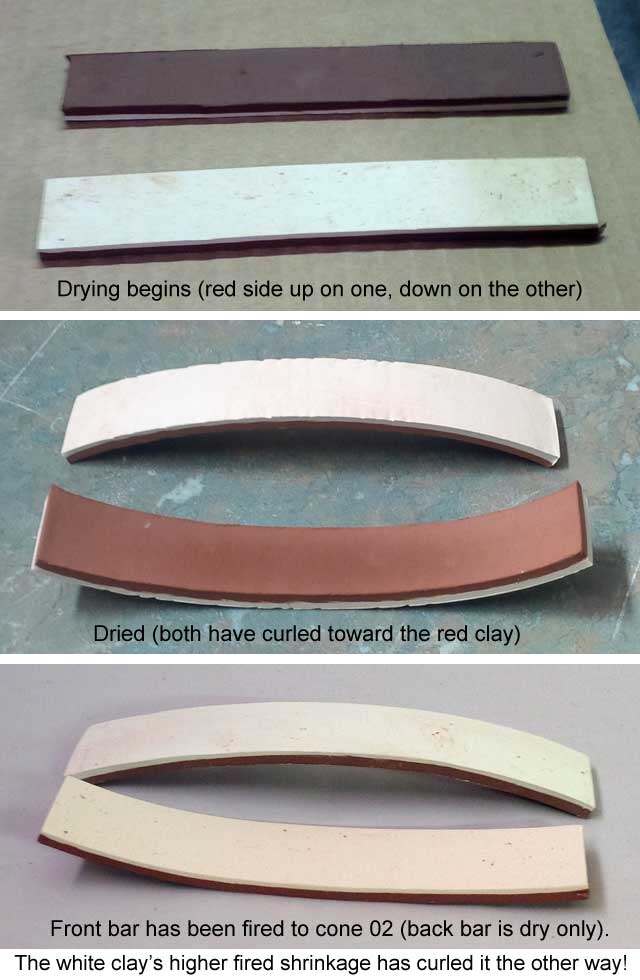Bi-Clay strips test compatibility between engobe and body
Slips and insight-live.com/glossary/35">engobes are fool-proof, right? Just mix the recipe you found on the internet, or that someone else recommends, and you are good to go. Wrong! Low fire slips need to be compatible with the body in two principle ways: drying and firing. Terra cotta bodies have low shrinkage at cone 06-04 (but high at cone 02). The percentage of frit in the engobe determines its firing shrinkage at each of those temperatures. Too much and the engobe is stretched on, too little and it is under compression. The lower the frit the less the glass-bonding with the body and the more chance of flaking if they do fit well (either during the firing or after the customer stresses your product). The engobe also needs to shrink with the body during drying. How can you measure compatibility? Bi-body strips. First I prepare a plastic sample of the engobe. Then I roll 4 mm thick slabs of it and the body, lay them face-to-face and roll that down to 4 mm again. I cut 2.5x12 cm bars and dry and fire them. The curling indicates misfit. This engobe needs more plastic clay (so it dry-shrinks more) and less frit (to shrink less on firing).
Pages that reference this post in the Digitalfire Reference Library:
EBCT Engobe Body Compatibility Test, Creating a Non-Glaze Ceramic Slip or Engobe, Solving a difficult engobe flaking problem, How to test if an engobe fits a clay body, An engobe is shivering off the rim of a low temperature mug, Chipping edges on handmade terra cotta tile. Why?, Here is why you don't want an engobe to melt, Body glaze Interface, Majolica, Firing Shrinkage, Engobe

This post is one of thousands found in the Digitalfire Reference Database. Most are part of a timeline maintained by Tony Hansen. You can search that timeline on the home page of digitalfire.com.
